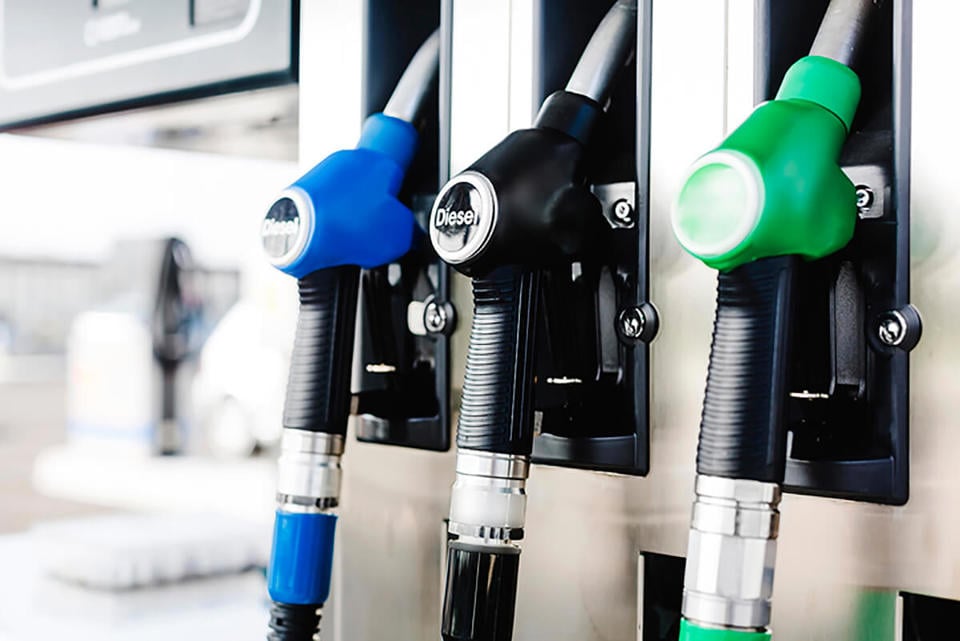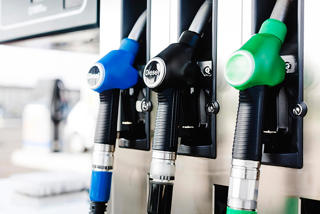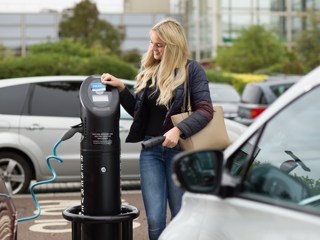Company car drivers and fleet decision-makers suffered the biggest increase in petrol and diesel prices in April since December 2016, with both fuels up nearly 3p a litre, reports RAC Fuel Watch.
It is also predicting that they could continue to rise over the next two weeks by a penny or so and, if oil gets more expensive and the pound weakens any further, fleets could face further pump price volatility.
Data shows that the average price of a litre of unleaded went up 2.74p from 120.46p to 123.20. Diesel rose 2.94p a litre from 123.08p to 126.02p, thanks to a 12% surge in the price of oil from $67 a barrel to $75.
RAC fuel spokesman Simon Williams said: “A 3p a litre rise at the pumps is fortunately fairly unusual, but it’s definitely bad news as it means drivers are now paying 8p more a litre than they did last summer.”
Not since December 2016 have average fuel prices risen so sharply. The increase then was 3p a litre for both fuels, with petrol rising to 117.23p a litre and diesel to 119.63p.
The last time the average price of unleaded was as expensive at it is now was in mid-November 2014. Diesel last exceeded 126p a litre on December 1, 2014.
Williams said: “The dramatic rise in the oil price and its knock-on effect on the cost of fuel is clearly demonstrated by the fact that the four big supermarkets, which sell the largest volumes and therefore buy fuel in more quickly than other retailers, have raised their prices even more steeply.”
A litre of supermarket petrol went up 3.2p to 120.17p, and diesel by 3.3p to 123p, signifying they are quickly passing on increased wholesale costs to motorists.
“Unfortunately, the price of oil gained $8 in April driven by a combination of international issues, all of which could negatively affect global supply,” said Williams.
The biggest of these is the fear that the United States could re-impose crippling economic sanctions on Iran – the third largest oil producer in OPEC – over its controversial nuclear energy programme.
Williams continued: “The outlook for fuel prices is not good at the moment as the oil price is well over $70 a barrel, and if the US does try to re-impose sanctions on Iran and supply drops, motorists will end up paying far more at the pumps.
“Our current two-week prediction is for prices to go up by a penny or so, but this could quickly get worse if oil gets more expensive and the pound weakens any further.”
The cost of filling up an average family-sized 55-litre car with petrol is now nearly £68 (£67.76) which is £4.50 more expensive than it was last July. For diesel car drivers it’s even worse with a tank costing over £69 (£69.31), which is £5.50 more.
Regional fuel price variation
Northern Ireland unusually experienced the biggest increase in petrol prices with a 3.47p rise from being the cheapest in the UK at 119.47p a litre to a ‘middle of the road’ 122.94p.
The West Midlands saw the smallest increase at 2.38p to 122.68p. The South East is still the most expensive place to buy petrol with a litre costing 124.05p at the end of April.
Looking at diesel prices, motorists in Scotland were subject to the biggest uplift – 3.16p – to 126.06p, which was only just worse than Northern Ireland, although drivers there can take some solace from the knowledge that they are buying the cheapest diesel in the UK at 125p a litre. The most expensive diesel can be found in the South East where a litre now costs 126.79p.
Regional average unleaded pump prices
|
Unleaded |
02/04/2018 |
30/04/2018 |
Change |
55-litre tank cost as of 30/4/18 |
|
UK average |
120.46 |
123.20 |
2.74 |
£67.76 |
|
Northern Ireland |
119.47 |
122.94 |
3.47 |
£67.62 |
|
Scotland |
119.91 |
122.96 |
3.05 |
£67.63 |
|
North West |
119.78 |
122.68 |
2.90 |
£67.47 |
|
North East |
119.80 |
122.69 |
2.89 |
£67.48 |
|
East |
120.82 |
123.63 |
2.81 |
£68.00 |
|
Yorkshire And The Humber |
119.74 |
122.48 |
2.74 |
£67.36 |
|
South East |
121.31 |
124.05 |
2.74 |
£68.23 |
|
Wales |
120.07 |
122.80 |
2.73 |
£67.54 |
|
South West |
120.67 |
123.36 |
2.69 |
£67.85 |
|
East Midlands |
120.35 |
123.01 |
2.66 |
£67.66 |
|
London |
121.13 |
123.79 |
2.66 |
£68.08 |
|
West Midlands |
120.30 |
122.68 |
2.38 |
£67.47 |
Regional average diesel pump prices
|
Diesel |
02/04/2018 |
30/04/2018 |
Change |
55-litre tank cost as of 30/4/18 |
|
UK average |
123.08 |
126.02 |
2.94 |
£69.31 |
|
Scotland |
122.90 |
126.06 |
3.16 |
£69.33 |
|
Northern Ireland |
121.86 |
125.00 |
3.14 |
£68.75 |
|
North West |
122.66 |
125.77 |
3.11 |
£69.17 |
|
Wales |
122.75 |
125.81 |
3.06 |
£69.20 |
|
London |
123.57 |
126.59 |
3.02 |
£69.62 |
|
North East |
122.48 |
125.50 |
3.02 |
£69.03 |
|
West Midlands |
122.67 |
125.57 |
2.90 |
£69.06 |
|
South East |
123.91 |
126.79 |
2.88 |
£69.73 |
|
East Midlands |
123.02 |
125.89 |
2.87 |
£69.24 |
|
East |
123.73 |
126.55 |
2.82 |
£69.60 |
|
Yorkshire And The Humber |
122.37 |
125.19 |
2.82 |
£68.85 |
|
South West |
123.37 |
126.16 |
2.79 |
£69.39 |
Motorway fuel prices were largely unchanged in April with a litre of petrol costing 138.43p (a rise of just 0.34p) and diesel 141.11p – a slightly larger rise of 1.13p. This means both fuels are more than 15p a litre more expensive than the average UK prices.























Andy Allen - 03/05/2018 12:03
If you look at other industries that carry exposure to volatile oil or commodity prices they typically utilise tools to minimise their exposure to price changes and firm up margins. Airlines are a good example, they sell flight tickets 6-9 months in advance so have a fixed income but the fuel for their flights is priced on a Platts marker at the period they operate the flight. They systematically hedge their exposure to fuel prices or they'd go out of business! BP are one of the largest commodity traders in the world and help businesses in many industries manage their fuel price risk.